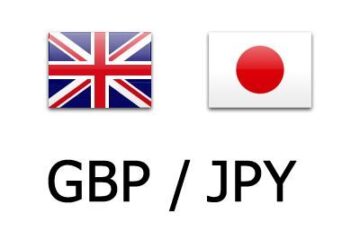Small-cap stocks have market capitalizations between $250 million and $2 billion.
Foundry from Pixabay; Canva
What Is a Small-Cap Stock? How Do I Know If a Stock Is Small-Cap?
One of the most important metrics financial analysts use to categorize stocks is market capitalization. More than just a measurement of a company’s size, market capitalization, or market cap for short, is also an estimate of a company’s worth.
Market cap takes into account the current price of one share of stock multiplied by the total number of shares outstanding. This gives investors a snapshot of the company’s current market value.
Stocks are categorized from small to large:
Big, multi-national corporations are known as large-cap or blue chip stocks. These are the well-known names that make up the Dow Jones Industrial Average, like Apple, Disney, and Johnson & Johnson.
Smaller companies and startups, on the other hand, are known as small-cap stocks, or small-caps. These companies have a market cap of between $250 million and $2 billion. Because small-cap stocks have historically outperformed larger caps, savvy investors are constantly on the lookout to identify the next small company that’s poised for liftoff.
It is important to remember that market cap is tied to share price, which means that it can change at any time. For instance, a company may discover a cutting-edge advancement that causes demand for its products to grow, or it could report consistently solid earnings and have fundamentals that make it attractive to investors.
Any number of factors could cause a smaller cap company to grow into a mid-cap or large-cap company, and early-in investors often enjoy handsome profits as a result. This makes small-cap stocks worth a closer look—in any market environment. In this article, we’ll get into some of the advantages as well as risks they have compared to other equities.
How Many Small-Cap Stocks Are There? How Much Are They Worth?
Roughly 35% of the entire stock market is made up of small-cap stocks. Consider the FT Wilshire 5000 Index, for instance, a total stock market index that contains nearly all of the tradable stocks available today, from the biggest of the mega-caps to the tiniest micro-caps. It has about 750 large-cap stocks and around 1,750 small-cap stocks. But notice how because this index is capitalization-weighted, large-caps account for the bulk—91%—of the entire value of the index. Small-cap stocks make up just 9%, and the remaining 1% goes to micro-cap stocks, so you can see just how important market cap is to a stock’s valuation.
Where Are Small-Caps Listed? How Can I Trade Them?
Small-cap company names may not be as recognizable as, say, Netflix or Apple, but their shares are just as easily tradable. You can buy or sell small-caps through a broker, like Charles Schwab or TD Ameritrade, or through a commission-free online service, like Robinhood.
Small-caps are also listed on composite indexes like The Nasdaq, which until 2005 was known as the primary index for small-cap stocks; however, it has since changed and now includes large-caps. The Nasdaq itself has been subdivided into different tiers that reflect both market cap as well as a company’s need to raise capital—because small-caps aren’t the only companies with funding needs.
Investors can also enjoy the advantages of owning small-cap stocks through a mutual fund or an exchange-traded fund (ETF). There are several indexes that solely track small-cap stocks, like the Russell 2000 and the S&P 600, and ETFs have been created to mimic these indexes, as well. The Russell 2000 is considered a benchmark index for the overall strength of small-cap companies, and mutual fund portfolio managers often track their performance against it.
Are Small-Caps Always Startups?
Contrary to what some may think, a small-cap company doesn’t have to be a startup. Small-cap companies could be humming along for many years with healthy fundamentals and strong earnings reports. Not all companies strive to be mega-cap multinational conglomerates.
What Is the Difference Between Small-Cap and Micro-Cap?
The difference has everything to do with market cap. Micro-cap companies are $50 million-$250 million in size, while small-caps are bigger, ranging between $250 million and $2 billion.
Investing in micro-cap stocks also comes with an increased level of volatility, since their trading volume is not very big: Investors placing large buy or sell orders could cause dramatic swings in share prices.
In addition, micro-cap stocks are more commonly found on over-the-counter trading desks (OTC) than on the large national exchanges like the New York Stock Exchange. This means fewer investors have access to them, so they tend to experience lower trading volume than equities listed on major exchanges like the NYSE.
Are Small-Caps the Same as Penny Stocks?
They may sound similar, but small-caps are quite different from penny stocks. The very classification of a small-cap company, dealing with its market cap, illustrates how few outstanding shares it has. The company might actually have a high share price; it’s the number of shares that makes it small.
Penny stocks, on the other hand, are classified by the Securities and Exchange Commission as stocks that trade at under $5 per share. They are not traded frequently, and thus have low liquidity and are difficult to buy—and perhaps even harder to sell. In fact, the SEC advises investors to wait two days before executing a trade. Like micro-caps, penny stocks are not traded on national exchanges but rather OTC.
Are Small-Cap Stocks Good Investments?
Growth investors, in particular, prize small-caps because they are considered good investments for their low valuations. They also have tremendous upside potential—today’s small-cap may very well become the Amazon of tomorrow.
Another advantage for individual investors is that mutual funds and institutions don’t typically invest in small-caps—due to SEC filing requirements—because buying shares in bulk will cause price swings. Therefore, individual investors don’t have to worry as much about price inflation from the bigger investors.
However, there is a phenomenon that occurs when a small-cap stock is added or delisted from the Russell 2000 because all the mutual funds that are benchmarked to this index automatically purchase it, pushing prices higher for a few weeks on increased trading volume. In turn, when a company is delisted from the index, shares plummet. This is known as the Russell Effect, and investors should make note that these changes take effect every June.
What Are Some Disadvantages of Investing in Small-Cap Stocks?
Investing in large-cap stocks is pretty predictable. Large-caps enjoy increased liquidity and higher trading volume, making them easier to buy and sell. They aren’t as volatile as small-caps and thus, large-cap investing is often considered less risky. Another advantage large-caps have over small-caps is that they often make dividend payments, which is a portion of their profits sent directly to shareholders.
But investors may find that the small-cap risk premium outshines the comfort and predictability of investing in larger companies—simply because smaller companies have exponentially greater opportunities to grow and expand, while large-caps have typically already made the business decisions that have caused them to enjoy tremendous appreciation as a result.
What company sizes you should invest in depends on what type of investor you are and what your risk tolerance is. That being said, a portfolio diversified by market cap can help keep you somewhat protected while still exposing you to the growth potential offered by small-cap stocks.
Will Small-Cap Stocks Outperform in the Next Decade?
TheStreet’s Kevin Curran sees 2022 as a pivotal year for small-caps and shares two of his favorites.


